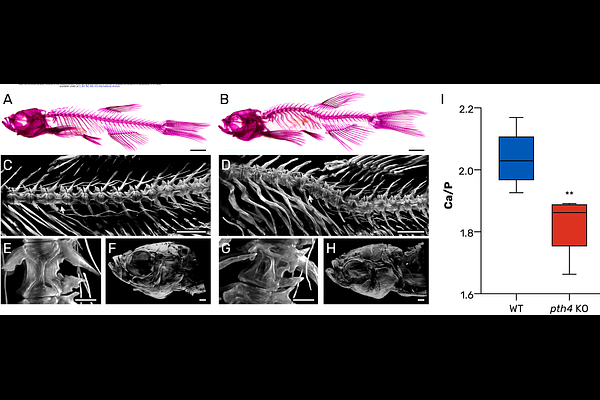Genetic ablation of Pth4 disrupts calcium-phosphate balance, bone development, and kidney transcriptome in teleosts

Genetic ablation of Pth4 disrupts calcium-phosphate balance, bone development, and kidney transcriptome in teleosts
Mendez-Martinez, L.; Suarez-Bregua, P.; Guerrero-Pena, L.; Costas-Prado, C.; Barreiro-Docio, E.; Cobelo-Garcia, A.; Rotllant, J.
AbstractParathyroid hormone 4 (Pth4) is an evolutionarily conserved member of the PTH family, expressed in hypothalamic neurons and lost in eutherian mammals. In order to elucidate its role in mineral homeostasis and skeletal development, a pth4 knockout (pth4KO) zebrafish line was generated using CRISPR/Cas9 and transcriptomic profiling was conducted across six key tissues: brain, kidney, intestine, gills, scales, and bone. The results obtained demonstrated that the loss of Pth4 led to pronounced disturbances in calcium and phosphate homeostasis, skeletal deformities, and widespread tissue-specific transcriptional alterations. Notably, dysregulation of mineral regulatory genes, such as fgf23, phex, and slc34a1a was particularly evident in the kidney, suggesting disruption of the FGF23-Klotho axis. In parallel, differential expression of extracellular matrix genes (col1a1a, col10a1a, col11a1) and matrix remodeling enzymes (mmp9, mmp13a, mmp2) in bone and scales indicated impaired skeletal remodeling. Together, these findings highlight a pivotal role for Pth4 in the endocrine and local regulation of mineral metabolism and skeletal integrity, expanding our understanding of PTH family functions in vertebrate physiology.